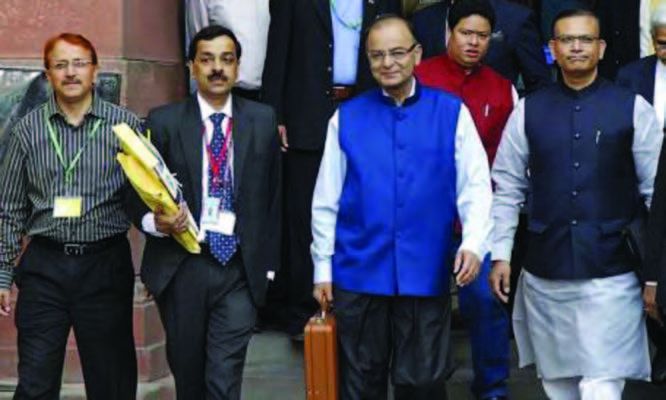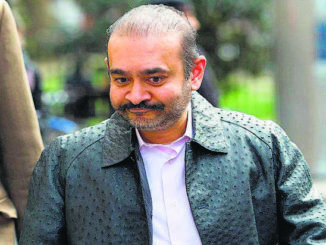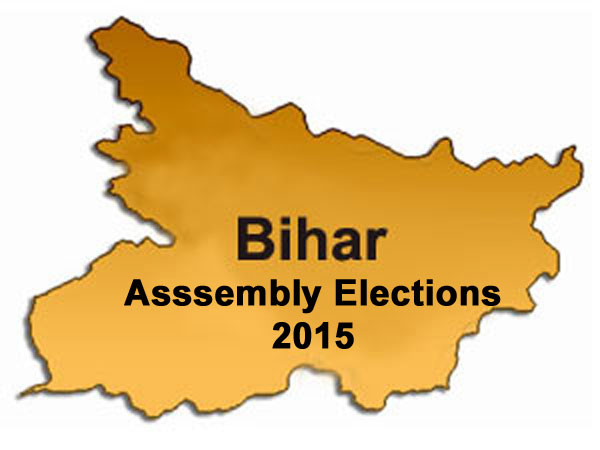
NEW DELHI (TIP): Finance Minister Arun Jaitley on Feb 28 announced a budget that put boosting growth before painful reforms, slowing the pace of fiscal deficit cuts and seeking to put domestic and foreign capital to work.
In his first full-year budget since Prime Minister Narendra Modi‘s landslide election victory last May, Jaitley said India‘s economy was about to take off. Modi tweeted that the budget would “further reignite our growth engine”.
Billed as a test of the nationalist premier’s willingness to reform a $2 trillion economy with a bloated public sector and weak private investment, the budget was short on structural reforms and contained revenue targets some called unrealistic.
It drew a mixed reception from economists, with some calling it a path to an investor-friendly India, but others seeing a missed opportunity to tackle deep-seated structural problems.
“Definitely far from what some were hoping would be an event similar to the game-changing budget of 1991 which ushered in India’s economic liberalisation,” said Devika Mehndiratta, senior economist at ANZ research.
Apparently anticipating such barbs, Jaitley, 62, said his government had acted “rapidly” to right the course of Asia’s third-largest economy.
“People who urged us to undertake ‘big bang’ reforms also say the Indian economy is a super giant, which moves slowly but surely,” Jaitley told parliament as he wrapped up a 90-minute speech.
Jaitley promised higher investment in India’s decrepit roads and railways, offered the carrot of tax cuts to global companies and the stick of tighter rules to get Indian tycoons to invest at home rather than stash wealth abroad. Tax evaders face jail sentences of up to 10 years, he warned.
The tax changes and tougher enforcement would raise $2.5 billion next year, he said. Tax receipts overall would rise 15 percent and government asset sales would raise $11 billion -goals that past experience shows may be hard to meet.
Although Jaitley forecast that growth would accelerate to 8-8.5 percent in the fiscal year starting in April, up from 7.4 percent this year, the budget contained little obvious support for Modi’s call to “Make in India“.
“It assumes a questionable growth rate, relies too heavily on divestment to meet fiscal targets, does not address the revenue deficit issue head on and leaves the good things for the future,” said Arvind Sethi, CEO of Tata Asset Management.

Capitalizing on windfall savings stemming from cheaper oil imports, Jaitley was able to ramp up infrastructure investment without slashing spending on politically sensitive subsidies and welfare schemes.
ROOM FOR RATE CUTS?
Jaitley forecast inflation at 5 percent by the end of the fiscal year ending March 2016, undershooting the Reserve Bank of India’s 6 percent target and creating room to cut interest rates. Annual inflation was 5.1 percent in January.
But he pushed back by a year, to 2017/18, a deadline for cutting the fiscal deficit to 3 percent of gross domestic product. In 2015/16, the deficit will be 3.9 percent of GDP, above the 3.6 percent target inherited from the last government.
In volatile trading, the Nifty ended 0.7 percent higher after having briefly fallen into the red on his comment that the fiscal deficit would slip.
Ratings agency Moody’s gave the budget a cool reception, saying it was neutral for India’s credit and left stabilising government finances at the mercy of economic growth. Moody’s rates India at the lowest notch of investment grade.
“We were not expecting big bang reforms,” said Atsi Sheth, a Moody’s sovereign ratings analyst. “The big bang reforms are also not desirable because they have a higher chance of rollback. “





Be the first to comment